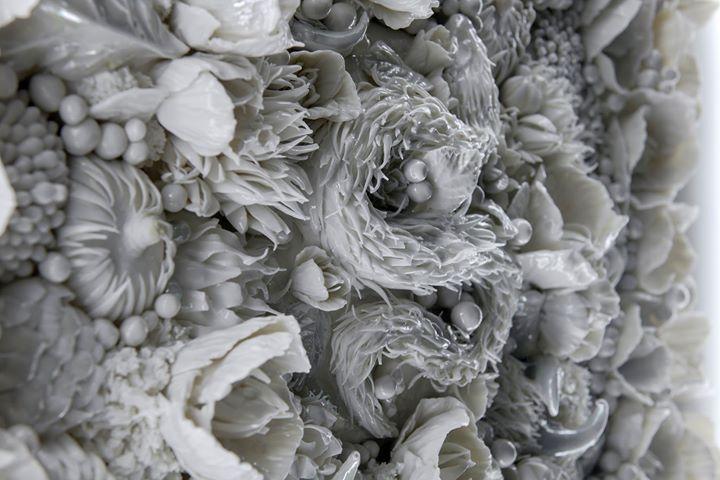
As an artist, Melis Buyruk uses her material very meticulously and effectively. Her works are a proof of real detailed works full of mastership. However, not only her way of using material is a great detail about her art, but also her way of thinking about nature, life and all living organisms is such a gift for the viewer.
Her show in Leila Heller Gallery in Dubai showcased how she uses her material and how she transforms the idea that we have about nature and human. Buyruk takes the detailed works and creates large scaled porcelain sculptures. “My main material is porcelain mud and I think as a material it has a great and strong character,” said Buyruk.
In her “Habitat” exhibition, Buyruk once again uses porcelain to express how she sees and perceives nature. On the other hand, her show at Leila Heller Gallery manifests how an artist can use her material to express her ideas. Her detailed works are a proof of how she works to reflect her creative process.
“In my Habitat exhibition my aim was to focus on reproduction and the creation of new hybrid species. These species are not identified. They are like plants, animals, humans and maybe all of them at the same time,” said Buyruk about her works.
What she aims first is to discover what the viewer sees within the porcelain ornaments. Even though the porcelain works give a certain impression, there is more to see in them. The artist loves to hide a figure among the ornament and adornments and lets the viewer to discover.
Buyruk is a master of porcelain, using the material as a canvas but still in a traditional way. Her large scaled works reveal hybrid flower forms, plants and animals. On one hand she uses the nature and natural world and, on the other, she creates a field for the viewer to discover a new approach within this, like flora and fauna. Buyruk’s monochrome works somehow reveal a futuristic approach in her porcelain works. That’s why the viewer sees not only ornaments and the reality lies just in the middle. The reality and surrealism in her works tell the viewer a new world with a new kind of species and fauna might be possible.
However, the most intriguing thing about her works lies in her creative process, where she transforms small and detailed porcelain ornaments into large canvas-like artworks. While each ornament looks like it repeats itself, she has the ability to change a large work from a small movement. And while doing so, she succeeds to make all works very poetically.
Nature and existence
The existence of species in nature is Buyruk’s special interest. “If we look at my past works, we can say there is always a kind of relation with nature. Charles Darwin’s theory of evolution always fascinated and inspired me,” she said.
The existence of species and how they pursue their lives in natural fauna is another inspiration for the artist. That’s why the animals that lie in the middle of the porcelain sculptures are very important.
“As people existed throughout history, they have become frightened from animals. They also lived together and both species always stood as a threat for each other and I also want to show this relation, and that’s why all the animals are installed in the middle in my porcelain works.”
The works of the artist tells us more during the COVID-19 crisis era. As human beings start to discover a new way of living and existing, animals and other specimen and nature start to exist in a different and a freer way. It seems the coronavirus crisis will make us much more modest and force us to leave more freedom to nature and animals. Buyruk’s monochrome works is almost calling us to this future, putting other specimen (rather than us humans) in the middle of life.